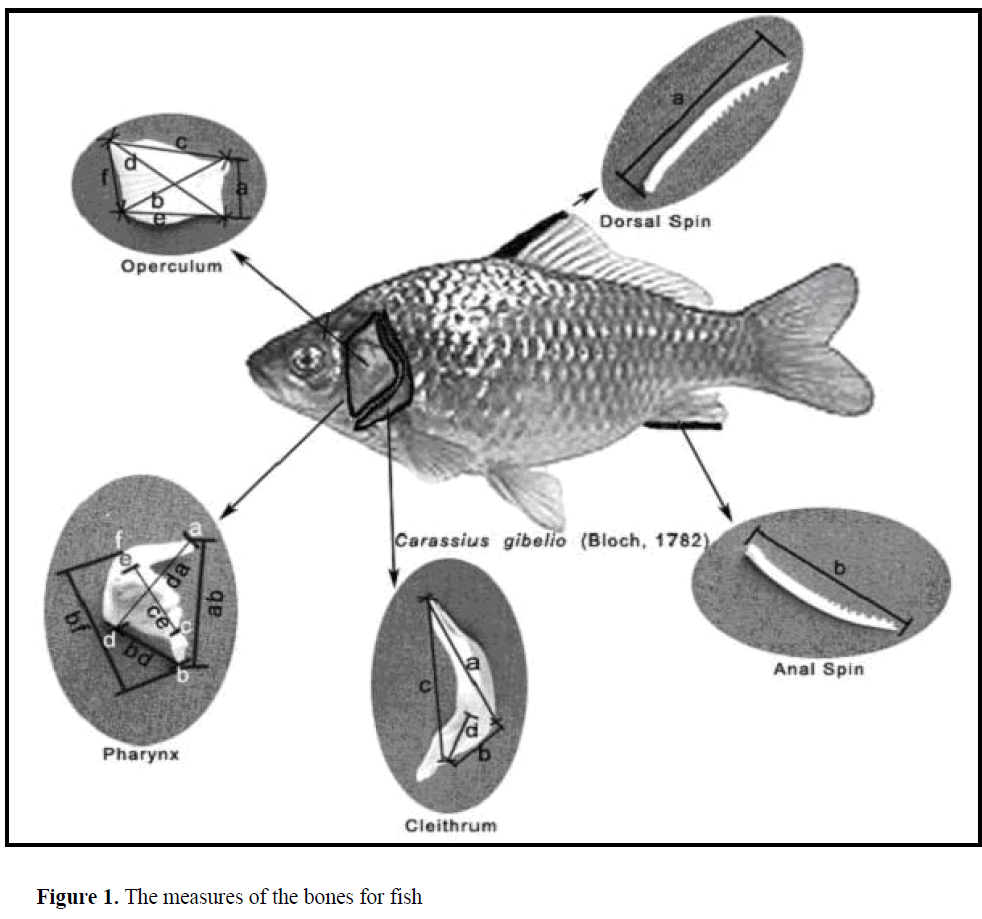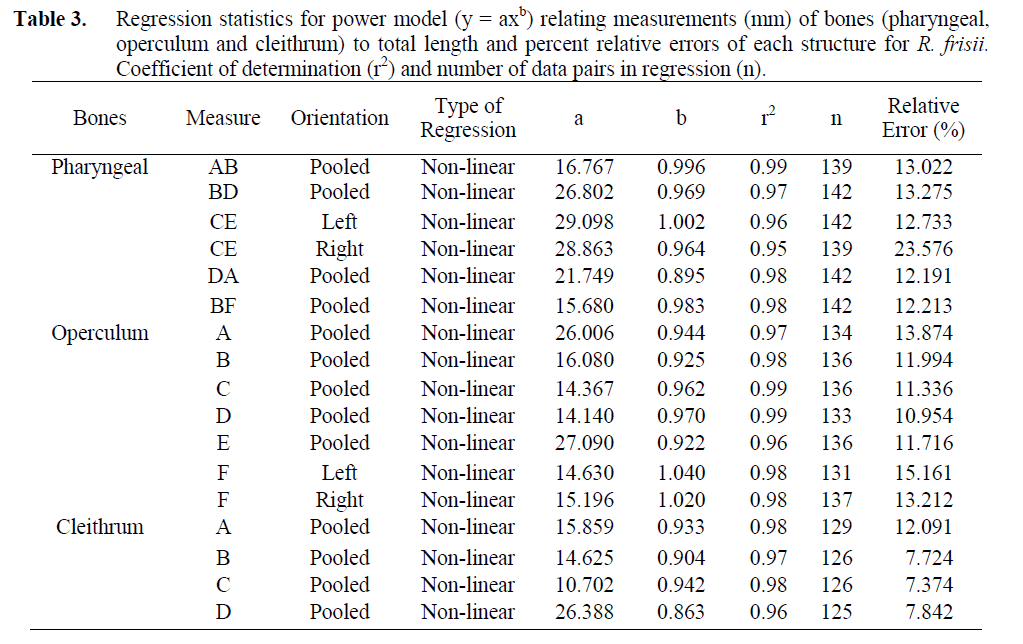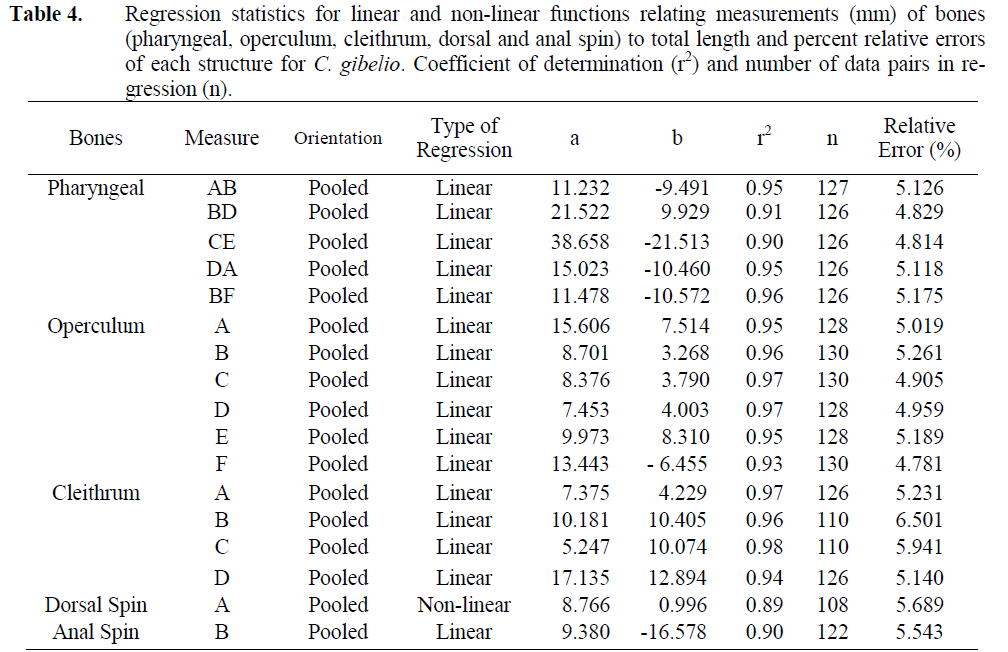Çigdem Gürsoy Gaygusuz1, Özcan Gaygusuz 2, Ali Serhan Tarkan2*,Hasan Acipinar2, Gülsah Sa&ccedi l;3
1Trakya University, Kesan Vocational High School, Kesan, Edirne, Turkey
2Istanbul University, Faculty of Fisheries, Eminönü, Istanbul, Turkey
3Mugla University, Faculty of Fisheries, Kötekli, Mugla, Turkey
4Istanbul University, Institute of Natural and Applied Sciences, Istanbul, Turkey
- *Corresponding Author:
- Dr. Ali Serhan TARKAN
Mugla University, Faculty of Fisheries
Kötekli, 4800
Mugla-TURKEY.
Tel: +90 252 211 18 88
Fax: +90 252 223 84 75
E-mail: serhantarkan@yahoo.com
Keywords
Introduction
Identification and analysis of the size and composition of prey taken by piscivorous predators assists in the further understanding of the ecology of piscivorous fauna (Mann and Beaumont, 1980; Hansel et al., 1988; Copp and Roche, 2003). Various methods developed for estimating the proportion of prey that expressed as biomass is usually considered as most closely quantifying actual diet composition (Bekker and Nolet, 1990; Pierce and Boyle, 1991; Prenda and Granado – Lorencio, 1992). This requires an estimation of the number of individual prey items taken, as well as their length and weight; both usually back-calculated from regressions based on the measurements of species-specific (diagnostic) bones found in the feces or gut. Such data not only help to identify possible species or size preferences within the diet, but also help to identify preferred foraging sites or habitats, which is important, when the fish is considered as an economic value.
Non-native gibel carp Carassius gibelio (Bloch, 1782) and native black sea roach Rutilus frisii (Nordmann, 1840) may be potential prey for native species in Turkey. Gibel carp was introduced to Turkish waters in the late 1980’s (Baran and Ongan, 1988) where they have developed extensive populations (Özulug et al., 2004; Gaygusuz et al., 2007). Gibel carp was first reported in Iznik Lake in 2004 (Gaygusuz et al., 2005) with increasing density and recognized as dominant prey species for water snakes (Acipinar et al., 2006), and water birds (unpublished data) in the lake. Increasing abundance of gibel carp would affect the population status of black sea roach and other native fish species in the lake as similar reports elsewhere in Turkey showed similar patterns (Sasi and Balik, 2003; Balik et al., 2003, 2004; Gaygusuz et al., 2007). These reports have emphasized that it is necessary to identify these two species as part of the native predators’ diet.
Therefore, the aim of the study was to elaborate the biometric relationships between bone dimensions and body size of gibel carp and black sea roach. Head and spin bones of fish are particularly useful for identifying the size and composition of prey species from the food remains of predators, as they withstand digestion and are taxonomically valuable (Copp and Kovác, 2003).
Materials and Methods
Specimens of gibel carp and black sea roach were collected from Iznik Lake between October 2003 and September 2004 using gillnetting and beach-seine. When the fish were brought to the laboratory, the fish were measured for total length (TL) as millimeter (mm) and for weight as gram (g), which are given in Table 1 and 2. After that the fish were frozen for later analysis.
Fish were boiled in water until flesh was easily detached, after which the bones were left to air dry. Replicate measurements were taken to examine the relationships between bone dimensions and body size of fish, (to the nearest 0.01 mm). The bones were used a digital caliper from both the left and right sides, which was taken five measurements of the pharyngeal bone, six measurements of the opercula, four measurements of the cleithra, and one measurement of the anal and dorsal spines (Fig. 1).

Figure 1: The measures of the bones for fish
Linear (y = ax + b) and non-linear (y = axb, power model) regression equations and analysis of variance (ANOVA), where y = TL, were fitted to determine what equations best described the relationships between fish size and bone dimensions. Relationships with the highest coefficient variation of determination (r2) were adopted as the best predictor (Zar, 1999). To test whether left and right side provided similar results, the linear and non-linear regression were calculated for all measurements, respectively. Data for left and right sides of a measure were pooled according to Analysis of Co-variance (Zar, 1999). The measurements providing the most accurate estimates of the back-calculated lengths were determined by calculating the confidence limits (95%) and then comparing the maximum values of relative error (confidence limit/calculated length) between measures (Radke et al., 2000).

Table 1: Maximum and minimum and mean values of length of R. frisii and C. gibelio from Iznik Lake.

Table 2: Maximum and minimum and mean values of weight of R. frisii and C. gibelio from Iznik Lake.
Results and Discussion
The bones were generally sturdy in gibel carp and more delicate in black sea roach. The left and right side measurements of all studied structures were pooled for gibel carp while only two measurements were analyzed separately for black sea roach. Non-linear functions provided the best fit for black sea roach however, linear functions were most suitable for gibel carp. All regressions were highly significant (P<0.001) and analysis of bone morphometric parameters versus TL showed that the regression model explained more than 89% of the variance in both species (Table 3 and 4). The maximum values of relative errors of different structure’s measures for bl ack sea roach were considerably higher than those of in gibel carp (Table 3 and 4). Measurements and structures studied within gibel carp did not show significant differences (P>0.001) (Table 4). Nevertheless, measurements in cleithrum had significantly lower maximum relative errors as compared to pharyngeal and operculum bones of black sea roach (Table 3).

Table 3: Regression statistics for power model (y = axb ) relating measurements (mm) of bones (pharyngeal, operculum and cleithrum) to total length and percent relative errors of each structure for R. frisii. Coefficient of determination (r2) and number of data pairs in regression (n).

Table 4: Regression statistics for linear and non-linear functions relating measurements (mm) of bones (pharyngeal, operculum, cleithrum, dorsal and anal spin) to total length and percent relative errors of each structure for C. gibelio. Coefficient of determination (r2) and number of data pairs in regression (n).
Linear functions were usually adequate to describe bone size-fish length relationships (Mann and Beaumont, 1980; Hansel et al., 1988; Prenda and Granado-Lorencio, 1992), although some authors found that curvilinear relationships provided the best fit for some fishes (Newsome, 1977; Radke et al., 2000) which is agreement with the present study. Left and right measurements of the some bone structures do not always provide the same estimate of prey fish length (Raczynski and Szuba, 1997), thus the pooling left and right measurements should be undertaken after adequate statistical analysis (Radke et al., 2000; Copp and Kovác, 2003). In the present study, left and right measurements were mostly pooled for the analyzed structures according to statistical examinations.
The data for cleithra, opercula, dorsal and anal spins could not be compared with those from the literature due to differences in the models and lengths used. However, the observed relationships between pharyngeal bone length and TL for gibel carp, (Table 3 and 4) are similar to those reported by Radke et al. (2000). This suggests that the relationship between bone size and body length are relatively constant within species across geographical ranges (Copp and Kovác, 2003).
Problems might occur when the bones used to estimate the length and weight of fish taken as prey. The influence of the digestive process and the drying of the bones in preparation for examination may inflict bias in terms of bone disfiguration (Britton and Shepherd, 2005). Use of hard structures may also bias data on food habits by favoring larger over smaller prey fish because their bones may be more resistant to digestion (Hansel et al., 1988). These factors may play a role when considering the accuracy of estimates, which should probably be used as suggestive (rather than absolute measures) of prey size.
Fish weight can also be estimated by twostep procedures, first using a relationship between fish length and weight and then applying a fish length/fish weight equation. Data for length-weight relationships of fishes studied in the present study were given in Acipinar (2005) and Tarkan et al. (2006).
The use of biometric relationships to facilitate diet reconstruction is vital in ecology and vertebrate biology. The outputs of this study provide a tool for biometric relationships that enable estimation of length and weight using head and spine bones of gibel carp and black sea roach. This information should facilitate the assessment of the diet of piscivorous fauna in Turkey, wherever potentially these gibel carp and black sea roach can be found.
Acknowledgements
Authors would like to thank to Zeynep TÜRER, Sema TÜRKKAN and Simge DEMIR for their help in laboratory work.
1646
References
- Acipinar, H., (2005). Iznik Gölü’nde Yasayan Levkit Baligi (Rutilus frisii Nordmann, 1840) Populasyonu Üzerine Bir Arastirma, Yüksek Lisans Tezi, Istanbul Üniversitesi Fen Bilimleri Enstitüsü, Istanbul 36 pp.
- Acipinar, H., Gaygusuz, Ö., Tarkan, A.S., Gürsoy, Ç., Al, Z. (2006). Presence of an invasive fish species, Carassius gibelio (Bloch, 1782) in the diet of dice snake, Natrix tessellata (Laurenti, 1768). Journal of Fisheries and Aquatic Science, 1: 213-217.
- Balik, I., Karasahin, B., Özkök, R., Çubuk, H., Uysal, R., (2003). Diet of silver crucian carp Carassius gibelio in Lake Egirdir. Turkish Journal of Fisheries and Aquatic Sciences, 3: 87-91.
- Balik, I., Özkök, R., Çubuk, H., Uysal, R., (2004). Investigation of some biological characteristics of the silver crucian carp, Carassius gibelio (Bloch, 1782) population in Lake Egirdir. Turkish Journal of Zoology, 28: 19-28.
- Baran, I., Ongan, T., (1988). Gala Gölü’nün Limnolojik Özellikleri Balikçilik Sorunlari ve Öneriler (Limnological features of Lake Gala, Fisheries Problems and Suggestions) – Gala Gölü ve Sorunlari Sempozyumu, Dogal Hayati Koruma Dernegi Bilimsel Yayinlar Serisi, Istanbul, p. 46-54.
- Bekker, D.L., Nolet, B.A., (1990). The diet of otters Lutra lutra in the Netherlands in winter and early spring. Lutra, 33: 134– 144.
- Britton, J.R., Shepherd, J.S., (2005). Biometric data to facilitate the diet reconstruction of piscivorous fauna. Folia Zoologica, 54: 193–200.
- Copp, G.H., Roche, K., (2003). Range and diet of Eurasian otters Lutra lutra (L.) in the catchment of the river Lee (south-east England) since re-introduction. Aquatic
- Copp, G.H., Kovác, V., (2003). Biometric relationships between body size and bone lengths in fish prey of the Eurasian otter Lutra lutra: chub Leuciscus cephalus and perch Perca fluviatilis. Folia Zoologica, 52: 109–112.
- Gaygusuz, Ö., Tarkan, A.S., Acipinar, H., Gürsoy, Ç., Özulug, M., (2005). A new powerful invader, Prussian carp Carassius gibelio (Bloch, 1782), in Turkish waters, Fourth Symposium for European Freshwater Sciences, 71, Krakow-Poland.
- Gaygusuz, Ö., Tarkan, A.S., Gürsoy, Ç., (2007). Changes in the fish community of the Ömerli Reservoir (Turkey) following the introduction of non-native gibel carp Carassius gibelio (Bloch, 1782) and other human impacts. Aquatic Invasions, 2: 117- 120.
- Hansel, H.C., Duke, S.D., Lofy, P.T., Gray, G.A., (1988) Use of diagnostic bones to identify and estimate original lengths of ingested prey fishes. Transaction of the American Fisheries Society, 117: 55-62.
- Hansel, H.C., Duke, S.D., Lofy, P.T., Gray, G.A., (1988) Use of diagnostic bones to identify and estimate original lengths of ingested prey fishes. Transaction of the American Fisheries Society, 117: 55-62.
- Newsome, G.E., (1977). Use of opercular bones to identify and estimate lengths of prey consumed by piscivores. Canadian Journal of Zoology, 55: 733-736.
- Özulug, M., Meriç, N., Freyhof, J., (2004). The distribution of Carassius gibelio (Bloch, 1782) (Teleostei: Cyprinidae) in Thrace (Turkey). Zoology in the Middle East, 31: 63-66.
- Pierce, G.J., Boyle, P.R., (1991). A review of methods for diet analysis in piscivorous marine mammals. Oceanography and Marine Biology: An Annual Review, 29: 409– 486
- Prenda, J., Granado-Lorencio, C., (1992). Biometric analysis of some cyprinid bones of prey fishes to estimate the original lengths and weights. Folia Zoologica, 41: 175–185.
- Raczynski, M., Szuba, Z., (1997). Description of the inferior pharyngeal bones, ossa pharynges inferiora, in the common bream Abramis brama (L.) from the Szczecin lagoon with special regard to bilateral asymmetry. Acta Ichthyologica et Piscatoria, 27: 59-67.
- Radke, R.J., Petzoldt, T., Wolter, C., (2000). Suitability of pharyngeal bone measures commonly used for reconstruction of prey fish length. Journal of Fish Biology, 57: 961-967.
- Sasi, H., Balik, S., (2003). The distribution of three exotic fishes in Anatolia. Turkish Journal of Zoology, 27: 319-322.
- Tarkan, A.S., Gaygusuz, Ö., Acipinar, H., Gürsoy, Ç., Özulug, M., (2006). Lengthweight relationship of fishes from the Marmara region (NW-Turkey). Journal of Applied Ichthyology, 22: 271-273.
- Zar, J.H., (1999). Biostatistical Analysis, 4th Edition. Prentince-Hall, Englewood Cliffs, NJ, 663 pp.











